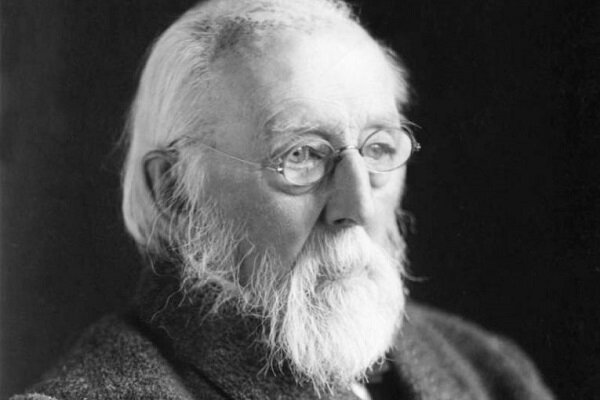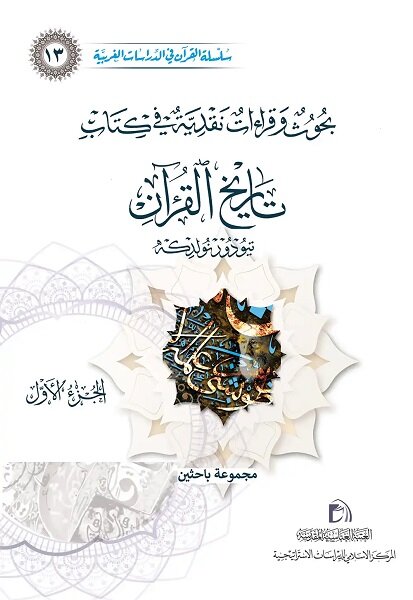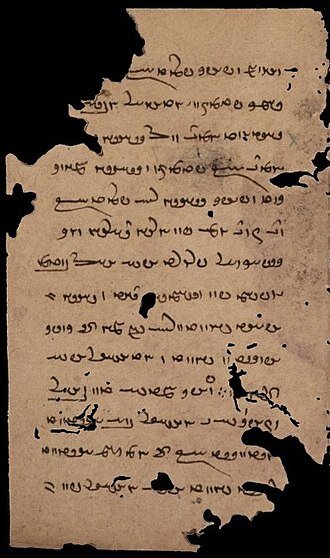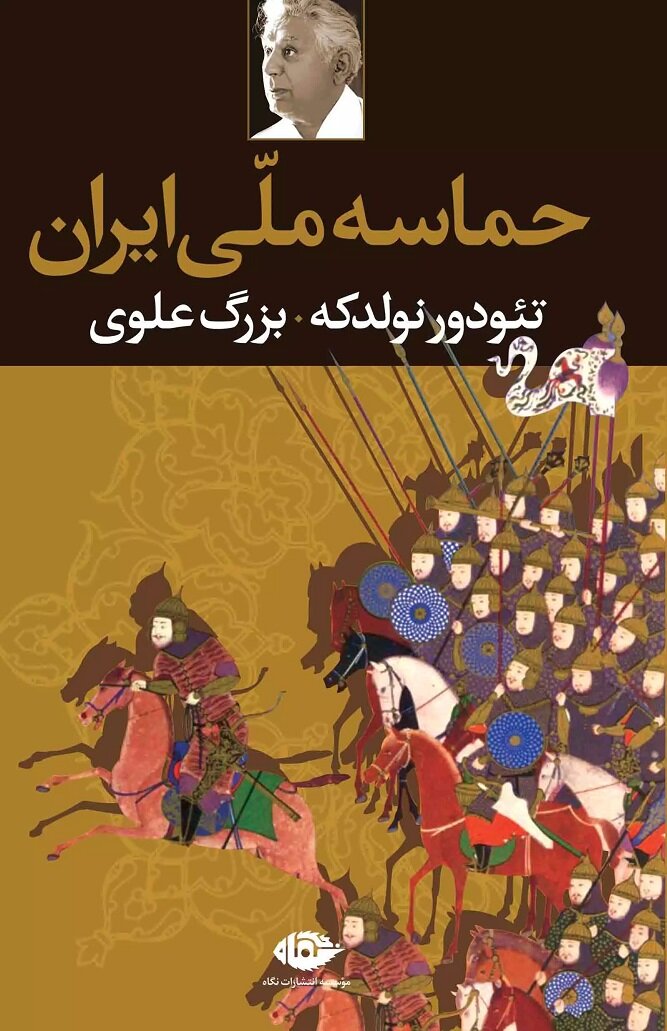A Look at the Theodore Noldke's record, Quran and Shahnameh researcher

Mehr News Agency, Culture and Literature Group – Tahereh Tehrani: “Familiar Aliens” is the title of a case that reviews the work and lives of foreign writers and researchers interested in Iranian culture and literature.
The first number of this is dedicated to Theodor Nöldeke, born on March 2, in a small town of Hamburg, Germany. His education began with his father and learned classical and Latin classical literature. Later, he went to Heinrich Oald, an old friend of his father, who was an Orientalist and knew Sami's languages; During this period he tended to Eastern studies and continued his education in the fields of theology and philosophy and Semitic languages until he was a treatise on the history of the Qur'an, at the age of eight.
In his dissertation, the scholar, in two parts, deals with the literary history of the Qur'an using Islamic sources and research by European Orientalists, this was the most important topic of his research until the end of his life.
Qur'anic research as a revelation and historical text
In the year 8, the Paris Academy Award won a prize for writing an article on the Qur'an. Two years later, the German translation of his doctoral dissertation, The History of the Qur'an, is the same book that was later published with changes and in collaboration with his student. Following his doctoral research, he first went to Vienna, the Austrian capital and then Leiden in the south of the Netherlands, reviewed the Arabic manuscripts there for about a month, and went to Berlin in April, where Arabic and Turkish manuscripts Review, and a list for Turkish manuscripts of that library.
In the year 6, at the age of nine – Noldke became a professor at the University of Gottingen in the field of Semitic and Islamic history, and went to the University of Strasbourg five years later. His main focus was on the history of Islamic civilization and the Semitic languages, but he was aware of many sciences related to Orientalism. His expertise in the Arabic, Syriac, Hebrew and Aramaic languages … and his acquaintance with Farsi made his work significant.

“The History of the Qur'an” is the index of Noldke, this book is the first complete translation of the Holy Quran, and although more than a hundred years have passed since the release of the first version, Western scholars are still referring to it. Noldke first divided the suras into two categories of Mecca and Civil and then into smaller sections, which eventually reached three parts of Mecca and one civil sections, in fact by examining the Qur'anic suras with regard to the time sequence and the events related to the suras. He followed the Qur'an according to its time range and the source of linguistic styles. In this method, the suras are arranged in the order of its descending. For example, the prophet sura, which is the 21st Surah of the Qur'an, was in the book of Noldke in the fifth sura. He viewed this structure as a comprehensive and coherent way to examine and pursue the text of revelation and to achieve verbal, literary and historical analysis. His other book, which is also relatively compact, is a brief description of the life and time of the Prophet of Islam based on historical traditions. Of course, both of these books have been criticized. Noldke also has books in the field of linguistics and old grammar such as Arami, Syriac, and classical Arabic.
The beginning of Iranology and Noldke's books
Arabic and Islamic research brought him to Iranianology and began studying the Shahnameh and writings in Pahlavi such as Ardashir Babakan's record by examining Persian sources and Sassanid materials in Tabari's history, and learned Middle Persian, but before that modern Persian Had learned.

A leaf from Ardashir Babakan's record
Noldke tried to find the roots of today's Persian words from the Pahlavi text. He knew the root of Azerbaijan as an autorpat, which was the name of one of the commanders of the Medes and then Alexander. His research on Iranology is very broad and not only related to historical issues, but also includes linguistic, morphology, geographical, mythological and epic stories, and even personality traits and the like. The result of this search is “The History of Iran Varab in the Sassanids” and “The National Epic of Iran”, the former was translated into Persian by Abbas Zariab Khoi and the second was translated into Persian by the great Alavi.

The Book of History of Iran and the Arabs in the Sassanid era examines the Sassanid government and their relationships with the Arabs and has been one of the key sources in the study of Sassanid history. Al -Tabari's book (translation and analysis of sections related to Iran in Tabari's history) is his translation and translation on Iran's sections in Tabari history, which includes important information on the Sassanid era and the transfer of power to Muslims.
Noldke also analyzed and examined Ferdowsi's Shahnameh as the national epic of Iran in the book of the National Epic of Iran (Das Iranische Nationalepos). In this work, he examined the structure, content and historical and cultural importance of the Shahnameh and attempted to identify the position of this work in world literature. In his research on Shahnameh sources, he compared some of the historical and validity aspects of the Shahnameh with ancient Iranian and Arabic sources and examined their historical accuracy.

Noldke's views on Shahnameh
Noldke analyzed the Shahnameh historically and mythical, believing that it was a mixture of real history, myths and oral narratives of ancient Iran. He pointed to the impact of Sassanid sources (especially the god) on the narrative structure of the Shahnameh. Despite the admiration for the epic and literary value of the Shahnameh, Noldke has considered and criticized some of its narratives historically. His research greatly influenced Iranian studies in the West, and many subsequent researchers used his methods and findings to examine Iranian history and literature. In his works, Noldke, in a critical look at the linguistics, style, and historical sources of the Shahnameh, was one of the first researchers to consider the Shahnameh not merely an epic work but also a historical source for the past of Iran.
What is the importance of Noldke's work?
In his research on the Shahnameh, he sought a deeper understanding of the historical, mythical and literary aspects of this work, and he considered the Shahnameh not only as a literary work, but also an important source for understanding the history and culture of ancient Iran and Islamic era. Noldke also examined the interactions of Iranian and Islamic culture in the Shahnameh and sought to show how Ferdowsi was able to preserve the mythical and historical elements of ancient Iran in an eternal literary work. Working on Ferdowsi's Shahnameh as part of his broader efforts to study and understand the culture and history of Iran and Islam is remarkable. His research in this field helped to better understand Western scholars in Persian literature and the position of Shahnameh in world literature. With his careful and scientific analysis, Noldke was able to clarify the various aspects of this great work and help it further understand it in the West.
Noldke is of particular importance among Orientalists and respects him with respect. He is one of the prominent Orientalists that many Orientalists have influenced his time and his post -Orientalists. The lasting effort and the brilliance of his mind and his widespread awareness of Greek literature and his full understanding of the three Sami languages including Arabic, Syriac and Hebrew, along with a long life, allowed him to make this position not only among German Orientalists, but also among the German Orientalists All the Orientalists gained.
Theodore Noldke spent the last years of her life in Crescent, and eventually died after a life of research and research on December 21, 2008 at the age of nine.
(tagstotranslate) Iran (T) Dutch (T) Shahnameh (T) German (T) Ferdowsi (T) of the Holy Qur'an (T) Austria (T) Berlin (T) University of Gottingen (T) Abbas Zariab Khoi (T) Alavi
Source:mehrnews